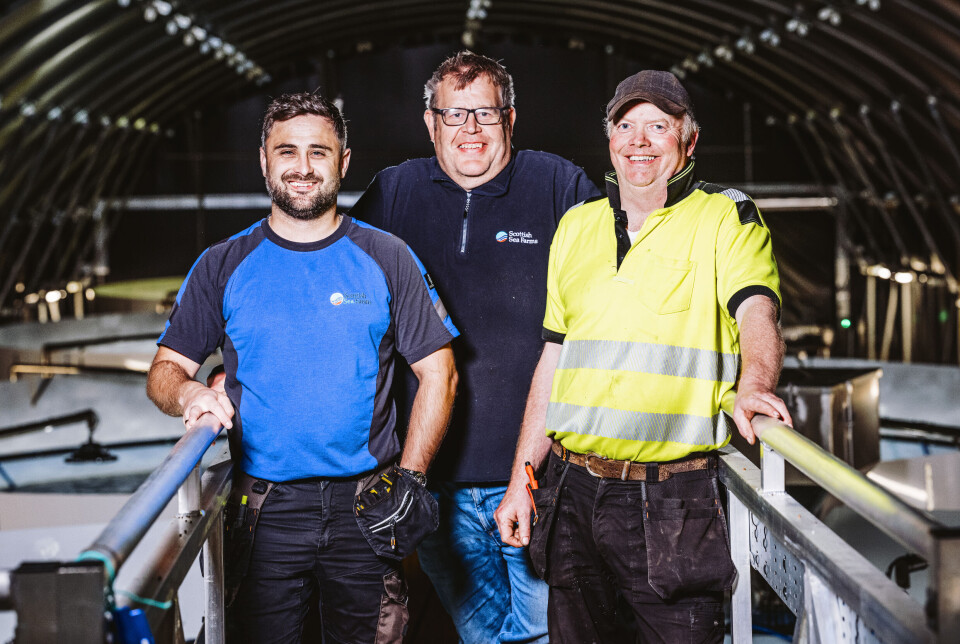
Tunnel vision pays dividends at Scottish Sea Farms hatchery
Bigger tanks and lightproof building result in increased capacity, enhanced fish welfare, and improved working conditions at flow-through site
Salmon farmer Scottish Sea Farms has increased smolt capacity by 25% at its flow-through hatchery at Knock on Mull by installing five new 8-metre tanks.
The tanks replace a number of outdoor 3-metre tanks and are housed within a large polytunnel with a dark cover so light can be controlled, significantly enhancing fish welfare, SSF reports in its staff newsletter, The Source.
The polytunnel also makes working conditions better for staff who are now sheltered from bad weather.
SSF’s head of freshwater Rory Conn told The Source that Knock can now produce 1.5 million smolts annually, an increase of 300,000 fish. Production complements the output of SSF’s recirculating aquaculture system (RAS) hatcheries at Barcaldine, near Oban, and Girlsta, in Shetland.
He said the changes at Knock allow the company to produce more smolts at the size it wants, at the appropriate time for stocking its marine sites, in a more cost and environmentally efficient way.
Doubled smolt size
“Scottish Sea Farms’ strategy is to have larger, more robust animals going into the sea and that is equally applicable for Knock as it is for Girlsta in Shetland and Barcaldine,” Conn told The Source.
“In recent years, we’ve more than doubled the average smolt size, as a company and out of Knock. The development on Mull has also given us much greater flexibility throughout the cycle.
“The plan here had been to move away from egg production and take in fry at around 3-5g from the recirculation hatcheries at Barcaldine or Girlsta where we have greater ability to manage temperature. But with egg availability being constrained at certain times of the year, which pressurises incubation capacity on all sites, maintaining egg incubation and first feeding capacity at Knock is important to ensure we can produce the smolt numbers when they are required.”

Conn credits long-time Knock manager Ian Fraser with reimagining the new hatchery configuration to enable a steady supply of smolts.
Fraser said repurposing some of the old tanks and installing an upgraded water supply and heat recovery system provided a more energy efficient environment for the incubation unit.
“The hatching and first feeding stages require more heating and it tends to be less economical to heat water in a flow-through unit than in the RAS at Barcaldine, where water is used multiple times.
“But when we took the old tanks out, we repositioned eight of them in the back of the shed and, with the new water system, we now have first feeding capacity for up to one million fish.”
The development, which did not disrupt production at Knock, is now complete and the freshwater team is finding it easier managing the bigger but fewer tanks, said Fraser.
Local contractors supplied the tanks and SSF’s senior freshwater engineer Stephen King and regular contractor Archie MacKinnon oversaw the works.